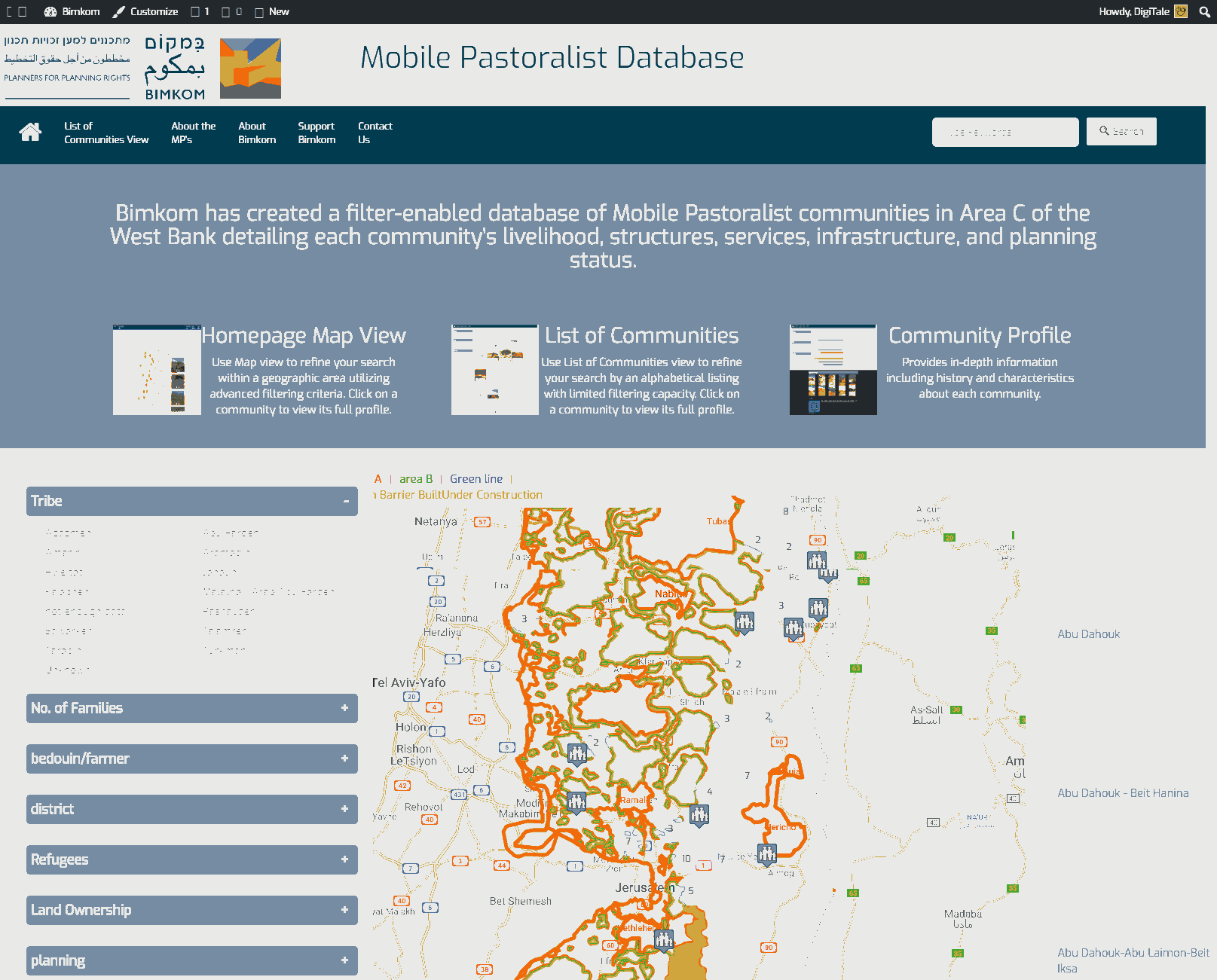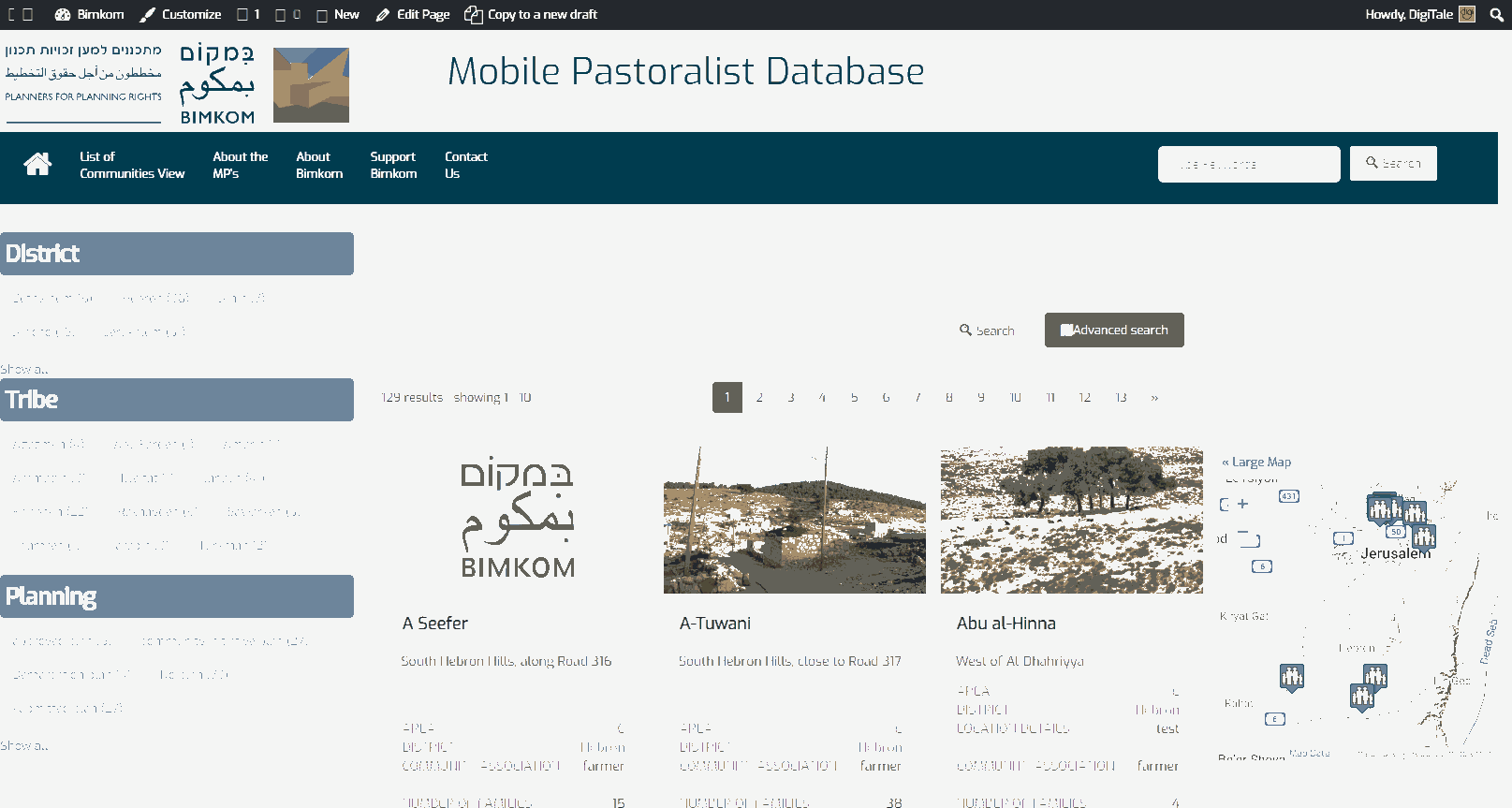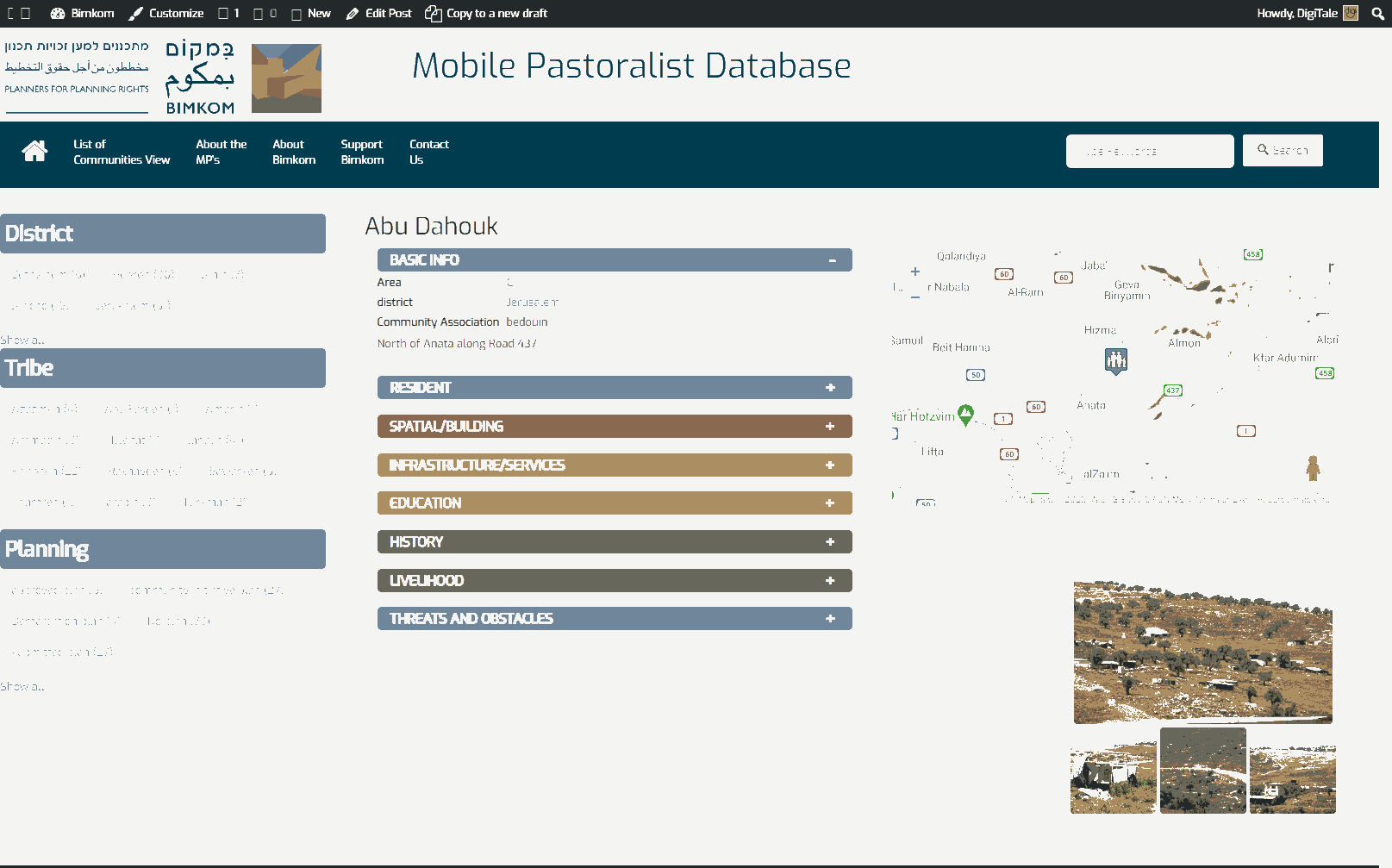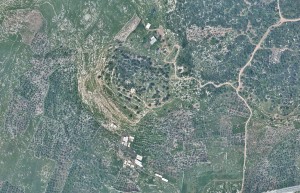South of Route 5, along the western border of West Bank
Al Lubban al Gharbi Herders
Resident
Number of Families
6
Names of Families
Al-Mahareeq (from Sammu'a), and Arsheidat (from Yatta)
Farmers Origin/Family
Sammu'a and Yatta
Spatial/Building
Land Ownership
lease
Land Ownership - details
The farmers lease the land from the owners from Rantis
Planning
No plan
Infrastructure/Services
Access to Community
private vehicle
Water Access
connection to neighboring village
Water Access - details
They are connected with pipes from the neighboring village Al-Lubban. It is prepaid service, but often has problems; the pipes are thin and the flow is very weak. Wild pigs (which are brought by settlers to the area in order to disturb the communities and cause them to leave their area) destroy the pipes.
Electric Connection
Electric Connection - details
They are connected to solar panels, provided by Comet Me, and which are sufficient for basic use only.
Health Care
clinic in neighboring community
Health Care - details
A clinic in Rantis village nearby, and the hospital in Ramallah
Location of Services
Rantis, Hebron, Ramallah
Education
Kindergarten
No
Location of School #1
Rantis
general description [school #1]
Boys;Girls;Primary school;Middle school;High School
Distances to schools [school #1]
2001 - 5000 meters
Location of School #2
Hebron
general description [school #2]
Boys;Girls;Primary school;Middle school;High School
Schools - details
Some childern learn at Rantis village nearby, and some prefer to learn at Hebron. Those who study in Hebron must stay with relatives there.
History
History
This community is comprised of two groups: Al-Mahareeq - two families (about 10 people) of Al-Mahareeq family originally from Sammu'a. They live in the north east of the community. Arsheidat - four families (about 20 people) of Arsheidat family, originally from Yatta.
All the families came here almost at the same period in the 1970's. First, two brothers came with their families, and their uncles remained in Ras 'Ein al 'Auja in the Jericho area, but they soon followed due to of the lack of water.
This area used to be their summer "Izbeh" area, while in winter they would travel to Jericho area, for better conditions for their herds. Due to Israeli threats of demolition and evacuation, they had to cease with their nomadic lifestyle in 2008. They lease the land from owners from Rantis.
All the families came here almost at the same period in the 1970's. First, two brothers came with their families, and their uncles remained in Ras 'Ein al 'Auja in the Jericho area, but they soon followed due to of the lack of water.
This area used to be their summer "Izbeh" area, while in winter they would travel to Jericho area, for better conditions for their herds. Due to Israeli threats of demolition and evacuation, they had to cease with their nomadic lifestyle in 2008. They lease the land from owners from Rantis.
livelihood
Seasonal Movement
no
Seasonal Movement - details
This area used to be their summer "Izbeh" area, while in winter they would travel to Jericho area, for better conditions for their herds. Due to Israeli threats of demolition and evacuation, they had to cease with their nomadic lifestyle in 2008. They lease the land from owners from Rantis.
Community Initiatives
Unknown
Other Occupation
shepherding;herd without shepherding;agriculture
Main Occupation
shepherding;herd without shepherding;temporary employment in Israel;agriculture
Woman's Occupation
taking care of the herd;taking care of the kids;housekeeping
General Livelihood - details
They have about 500 heads of sheep, but they are continually limited in grazing lands due to various obstacles, closing the area around them. They fear that next year they will not be able to graze their herds anymore. Currently they have to supplement fodder to feed the herds.
They produce dairy products for sale.
The majority are herders, but two men are work in Israel.
They produce dairy products for sale.
The majority are herders, but two men are work in Israel.
Threats and obstacles
Threats and Obstacles
fjfxjsfjsyjsyj
firing zone/closed military zone;settler violence;wild pig + dogs + access
Threats and Obstacles - details
A military base, to the west of the community causes damage to the agricultural lands.
While training, they use grenades which started a fire in 18 dunums of wheat and barley.
Wild pigs are brought by settlers in order to harass and cause damage to the village. They bite the water pipes, especially in summer looking for water. The pigs also cause damage to the crops the villagers plant.
Dogs on the other hand, raised by settlers, attacked and killed 20 heads of their sheep eight years ago.
A settler along with several volunteers, uses a drone to chase people in their homes, as well as frighten the herds. He has taken over the surrounding area towards north and east, where they used to graze their herd.
In the beginning of 2023, IDF closed the main entrance to the community, but later they managed to reopen it.
While training, they use grenades which started a fire in 18 dunums of wheat and barley.
Wild pigs are brought by settlers in order to harass and cause damage to the village. They bite the water pipes, especially in summer looking for water. The pigs also cause damage to the crops the villagers plant.
Dogs on the other hand, raised by settlers, attacked and killed 20 heads of their sheep eight years ago.
A settler along with several volunteers, uses a drone to chase people in their homes, as well as frighten the herds. He has taken over the surrounding area towards north and east, where they used to graze their herd.
In the beginning of 2023, IDF closed the main entrance to the community, but later they managed to reopen it.
Number of Demolition Orders
15
Number of Demolitions
5




